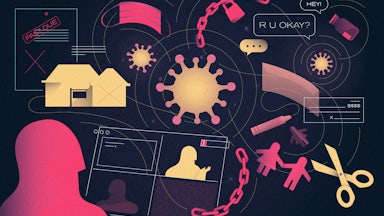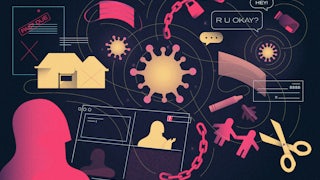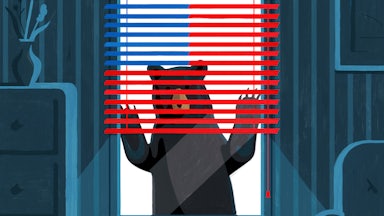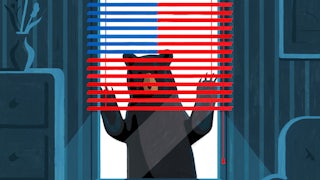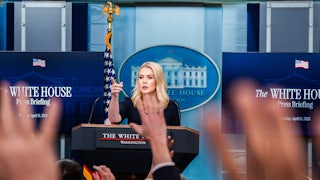Since early last year, four million people worldwide have died from Covid-19, with more than 600,000 people passing in the United States. With the onset of the virus, we were suddenly unable to see family, friends, or partners, or in some cases even to return home. From the acute devastation of lives lost en masse to everyday afflictions of boredom, loneliness, and burnout, this has been an extended period of collective trauma and upheaval—a time in which we became newly aware of just how interconnected and interdependent we all are. And yet, to some, this pandemic was merely an opportunity to become a better version of yourself.
The New York Times recently instructed readers on “How to Rearrange Your Post Pandemic Friendscape.” In a since-deleted passage, Kate Murphy wrote that “depressed friends make it more likely you’ll be depressed, obese friends make it more likely you’ll become obese, and friends who drink or smoke a lot make it more likely you’ll do the same.” The reverse, the piece continued, was also true: Cultivating friendships with “studious, kind, and enterprising” people will help you manifest those qualities. In this telling, fatness and depression are to be avoided—so much so that people who are fat or depressed should be edited out of friend groups for fear of contamination—but they are also uniquely singular qualities. A depressed or fat person cannot also be “studious, kind, or enterprising.” Friendship, rather than a relationship of mutual care, becomes transactional. Proximity to fatness or depression puts one at risk of becoming equally undesirable, or unoptimized.
Elsewhere in the Times, we were told that we could be “Using the Pandemic as an Opportunity to Lose Weight and Get in Shape.” Instagram posts from Refinery29 suggested that 2020 was really an opportunity to weed out the fake friends who were weighing us down. And The Washington Post warned us of “the risk of lapsing into our pre-pandemic ways,” as if we’ve all devoted the past 15 months to self-improvement.
Taken together, these articles convey the sense that while the world is a brutal and unequal place, our happiness, our health, our success, and our relationships are all fully within our control. This kind of hyper-individualization might seem benign, even empowering, but the message at its core is ultimately one of painful isolation: If you are struggling in any of these areas, it is your own fault. While these ideas are marketed as novel and modern, they are in fact nothing new. (The use of pop psychology and ideas of contagion for social improvement have a deeper, more fraught history.) It would be a mistake to forget the lessons of the past year and return to the seduction of hyper-individuality, not just because it leaves the vast majority of people behind but because, fundamentally, it doesn’t work.
This genre of self-improvement article is so popular and so pervasive because it has correctly diagnosed the symptoms to a problem that it is unable to fully articulate. That elephant in the room is structural inequality; the question these articles are asking is: “How can I make the current configuration of the world more manageable—or even advantageous—for me as an individual?”
An article encouraging mothers to wake up an hour before the rest of their family avoids the almost nonexistent childcare system in the United States, and a piece extolling the virtues of celery juice and positive thinking avoids confronting a broken health care system. This is not to say that we are fully without agency, but rather that individual choice is not the whole story. By advertising individual solutions, these articles create the sense that these are individual problems. This obsession with individual choice evades any possibility for collective action.
You see the same patterns in coverage of the pandemic. A return to “normal,” and indeed a return to an optimized version of normal, threatens to end some of the most humane policy interventions we have seen in decades: robust unemployment benefits, hazard pay for dangerous work (albeit far too temporary), and other social policies to help people better meet their material needs. The ability, extended to some, to work remotely increased accessibility for people with disabilities and chronic illnesses—a flexibility for which they have long been advocating. For others, it simply offered a more humane schedule. Networks of mutual aid, which have a long history in America, particularly among Black communities who were unable to access the American safety net, expanded during the pandemic, as community fridges flourished, neighborhoods coordinated grocery drop-offs, and tenants organized to ward off predatory landlords and protect one another. This kind of activism and organizing is proof that if the state is unable or unwilling to step in to provide adequate support—which is generally the case—we can not only rely on one another but thrive by doing so.
In these ways, the pandemic disrupted the illusion of self-mastery and the idea that our health and lives are entirely within our control. We saw that poverty is a stronger indicator of health outcomes than individual choices about organic vegetables, and that race and gender play larger roles in employment than hustle culture would have us believe. The pandemic was a magnifying lens through which to view the inequalities that define our daily lives—and to fight them. So why are we so quick to try and forget the lessons of interdependence that we learned this past year?
As much of the global north (and, it should be emphasized, almost exclusively the global north) moves into what some refer to as a post-pandemic world, it is time to reflect on the lessons of the past year and a half. We have experienced everything from a deep disruption in our daily lives to profound personal losses.
Like so many self-help articles before it, the Times piece on rearranging your “friendscape” correctly identifies that we live in a community and that we exist in relation to the people around us. What it misses is that our vulnerability and interconnection is not something to be edited out but something core to us as people. This is a time to nurture and protect our imperfect interdependence, not curate our relationships based on false ideas of who is, or isn’t, worthy of love and support. The impulse to come back better than ever after a traumatic experience is understandable, but in doing so we risk missing out on one of the most valuable aspects of being alive: our innate and unavoidable vulnerability. We need each other now more than ever.

